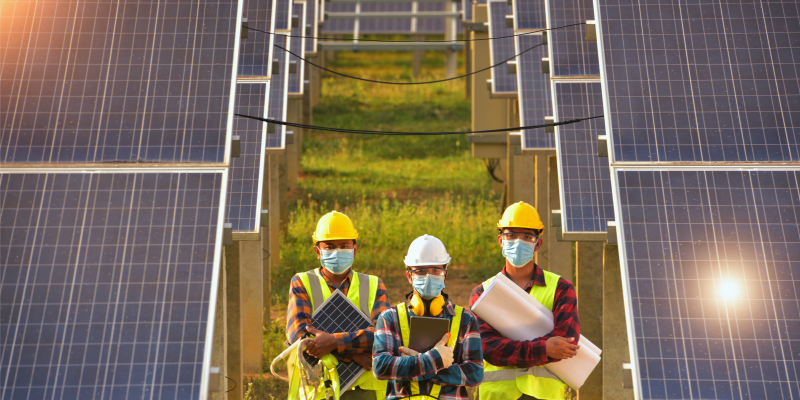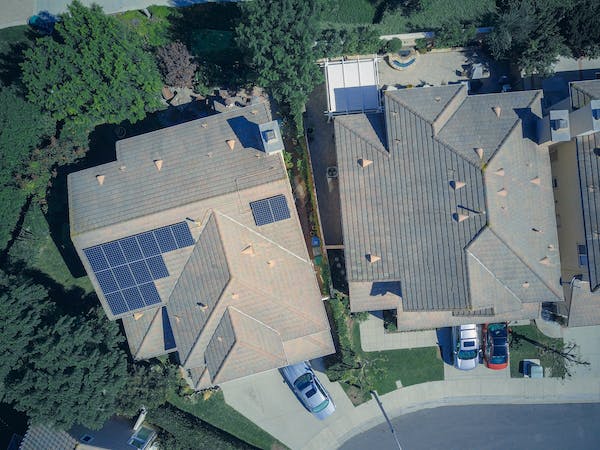1.Understanding the Basics of Solar Power: What Are the Benefits and How Does It Work?
Solar power is an increasingly popular form of clean energy due to its many benefits and its ability to reduce carbon emissions. This article will provide an overview of the basics of solar power, including what it is, the benefits associated with it, and how it works.
Solar power is energy generated from sunlight. This clean energy source is harvested using photovoltaic cells, which are usually mounted on the roof of a home or other building. This energy is then used to power lights, appliances, and other electronics. Because it is a renewable energy source, solar power is a much more environmentally friendly option than traditional fossil fuels.
There are numerous benefits associated with solar power. Firstly, it is much more cost-effective than other forms of energy. Solar panels can be installed at relatively low costs and will provide energy for decades, meaning that you can save money on your energy bills over time. Additionally, solar energy is a clean, renewable resource, meaning that it does not cause any environmental damage. Finally, it can be used to power a variety of devices and appliances, meaning that you can reduce your reliance on the grid and minimize your carbon footprint.
Knowing how solar power works is essential to understanding its benefits. The photovoltaic cells absorb energy from the sun and convert it into electricity. This electricity is then used to power devices and appliances in the home. The photovoltaic cells are connected to an inverter, which converts the energy into a usable form. The energy is then sent to the home’s electrical system, where it can be used to power lights, appliances, and other electronics.
In conclusion, solar power is an increasingly popular form of clean energy that has numerous benefits. It is cost-effective, renewable, and can be used to power a variety of devices and appliances. Understanding the basics of solar power, including how it works and the associated benefits, is essential to making the most of this clean energy source.
2.Exploring Types of Solar Power Technology and Their Applications
Solar power technology is an increasingly popular and reliable energy source for households, businesses, and industries. In recent years, advances in solar technology have made it easier and more cost-effective to install and use solar systems to meet energy needs. This article will provide an overview of the different types of solar power technology available, the applications for each, and the advantages and disadvantages of each.
The most common type of solar power technology is photovoltaic (PV) systems, which convert energy from sunlight into electricity. PV systems come in many shapes and sizes and are used to power residential, commercial, and industrial applications. The most common applications are powering homes, businesses, and industrial operations. PV systems can be used to power small appliances such as fans and lights, and they can also be used to generate electricity for larger applications such as heating and cooling systems.
Another type of solar technology is concentrated solar power (CSP). CSP systems use mirrors to focus sunlight onto a receiver, which converts the sunlight into thermal energy. This thermal energy is then converted into electricity. CSP systems are typically used for large-scale applications such as providing electricity to utilities or powering industrial operations.
Finally, solar thermal systems use the energy from the sun to heat water or other fluids. Solar thermal systems are most commonly used to heat water for residential and commercial applications. They can also be used for space heating and cooling, and for powering industrial processes such as drying and distillation.
Each type of solar technology has its own advantages and disadvantages. PV systems have relatively low maintenance costs and are relatively easy to install. However, they can be costly to install initially and are dependent on sunlight, making them less reliable in cloudy or rainy climates. CSP systems are more reliable than PV systems, but they are more expensive to install and require more maintenance. Solar thermal systems are the least expensive to install, but they require regular maintenance and are not as efficient as other types of solar technology.
Overall, solar power technology is becoming a more viable energy solution for households, businesses, and industries. While each type of technology has its own advantages and disadvantages, they all offer a reliable and cost-effective way to reduce energy consumption and reduce reliance on fossil fuels.
3.Determining How to Calculate Your Home’s Solar Energy Capacity
The first step in determining how to calculate your home’s solar energy capacity is to assess the amount of solar energy that your roof receives. This is done by measuring the total surface area of your roof and determining the average number of hours of direct sunlight your roof receives each day. This will help you determine the approximate amount of energy that your roof can produce.
The next step is to calculate the peak wattage required to power your home. This will depend on the size of your home and the devices and appliances you plan to run on solar power. Once you have determined your home’s peak wattage, you can calculate the number of solar panels required to generate that amount of power.
Finally, you must calculate the total capacity of your solar energy system. This is done by multiplying the number of panels by the wattage of each panel. This will give you a total capacity of how much energy your system can generate.
By following these steps, you can determine the exact capacity of your home’s solar energy system. Knowing this information will help you decide whether or not solar energy is right for your home.
4.Identifying the Steps to Designing a Solar Power System for Your Home
Designing a solar power system for your home can be a complex task, but understanding the basic steps involved can simplify the process. Below is a step-by-step guide to designing a solar power system for your home.
- Identify Your Energy Needs: The first step to designing a solar power system for your home is to identify your energy needs. This includes determining how much energy you consume each month and the types of appliances and devices that require power.
- Calculate Your Solar Power Needs: Once you have identified your energy needs, the next step is to calculate how much solar power you will need to meet those needs. This requires understanding your home’s energy requirements and your local climate conditions.
- Assess Your Home’s Solar Potential: The next step is to assess your home’s solar potential. This includes evaluating the size and positioning of your roof, the amount of sunlight that your roof will receive, and any potential obstructions that may block the sunlight.
- Select the Components for Your Solar System: After assessing your home’s solar potential, the next step is to select the components for your solar system. This includes selecting the type of solar panels, batteries, and inverters that will be used to generate and store your solar energy.
- Install Your Solar System: Once you have selected the components for your solar system, the next step is to install your system. This includes positioning the solar panels, installing the batteries and inverters, and connecting your system to the electrical grid.
- Monitor and Maintain Your Solar System: The final step is to monitor and maintain your solar system. This includes regularly inspecting the system for damage or wear and tear, and making any necessary repairs or adjustments.By understanding the steps involved in designing a solar power system for your home, you can ensure that your system is properly designed and installed to meet your energy needs. Additionally, monitoring and maintaining your system on a regular basis can help to ensure that it continues to generate clean, renewable energy for your home.
5.Comparing the Cost of Solar Panels Versus Traditional Energy Sources
The costs of solar energy have been decreasing steadily over the past few decades, making it increasingly attractive as an alternative to traditional energy sources. This trend has been driven by technological advances, government incentives, and economies of scale. In order to better understand the cost dynamics of solar energy, it is necessary to compare it to the cost of traditional energy sources.
When assessing the cost of solar energy, a number of factors must be taken into account. These include the initial cost of installing the solar panels, the amount of energy produced by the system, the cost of maintenance, and the amount of energy that can be stored. In contrast, the cost of traditional energy sources such as coal, oil, and natural gas depend largely on the market price of the fuel.
In general, the cost of solar energy is significantly lower than traditional energy sources. For instance, the cost of installing a 5-kilowatt solar array is typically around $7,000 to $9,000, which is much cheaper than the cost of constructing a new coal power plant. Furthermore, solar energy does not require any fuel, so it eliminates the need to purchase and transport fuel, which can be costly. Additionally, solar energy is renewable, so it does not emit any harmful emissions and does not cause air pollution.
In contrast, the cost of traditional energy sources can be much higher. For instance, the cost of building a new coal power plant can range from tens of millions to hundreds of millions of dollars, depending on the size of the plant. Moreover, coal plants are expensive to operate and maintain, and they require large amounts of fuel, which can be expensive. Additionally, traditional energy sources emit carbon dioxide and other pollutants, which can have long-term environmental impacts.
Overall, it is clear that solar energy is significantly cheaper than traditional energy sources. Although there may be upfront costs associated with installing solar panels, these costs are often offset by government incentives and the long-term savings on energy bills. Furthermore, solar energy is clean and renewable, so it does not cause air pollution or contribute to climate change. As such, it is an attractive and cost-effective option for powering homes and businesses.






